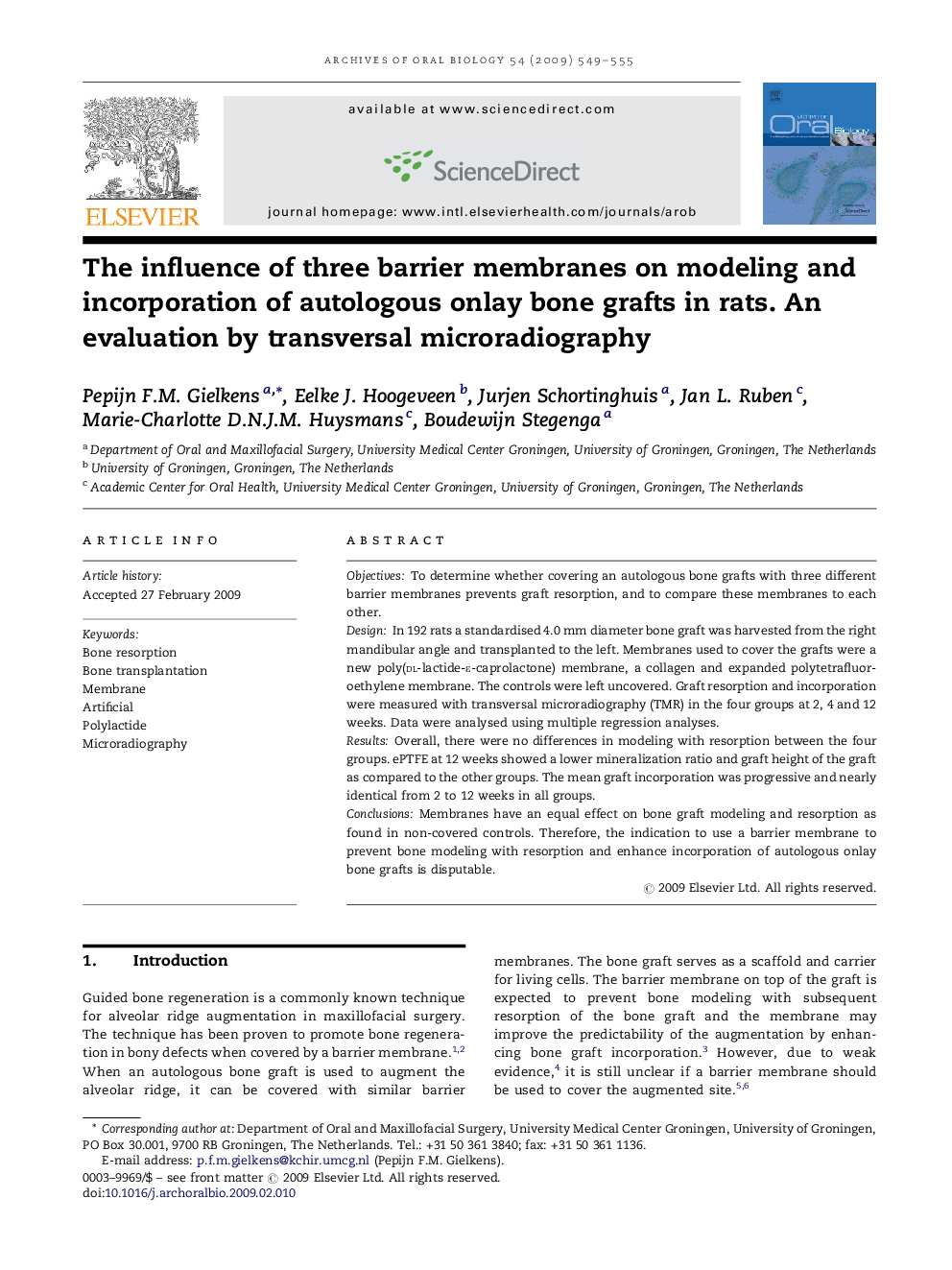| Article ID | Journal | Published Year | Pages | File Type |
|---|---|---|---|---|
| 3121272 | Archives of Oral Biology | 2009 | 7 Pages |
ObjectivesTo determine whether covering an autologous bone grafts with three different barrier membranes prevents graft resorption, and to compare these membranes to each other.DesignIn 192 rats a standardised 4.0 mm diameter bone graft was harvested from the right mandibular angle and transplanted to the left. Membranes used to cover the grafts were a new poly(dl-lactide-ɛ-caprolactone) membrane, a collagen and expanded polytetrafluoroethylene membrane. The controls were left uncovered. Graft resorption and incorporation were measured with transversal microradiography (TMR) in the four groups at 2, 4 and 12 weeks. Data were analysed using multiple regression analyses.ResultsOverall, there were no differences in modeling with resorption between the four groups. ePTFE at 12 weeks showed a lower mineralization ratio and graft height of the graft as compared to the other groups. The mean graft incorporation was progressive and nearly identical from 2 to 12 weeks in all groups.ConclusionsMembranes have an equal effect on bone graft modeling and resorption as found in non-covered controls. Therefore, the indication to use a barrier membrane to prevent bone modeling with resorption and enhance incorporation of autologous onlay bone grafts is disputable.
